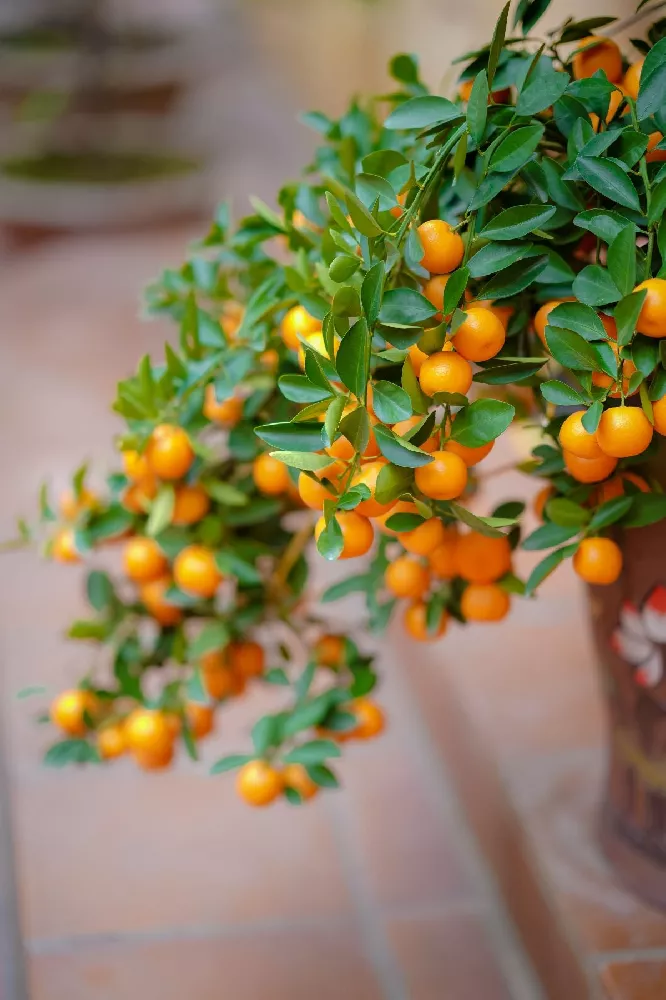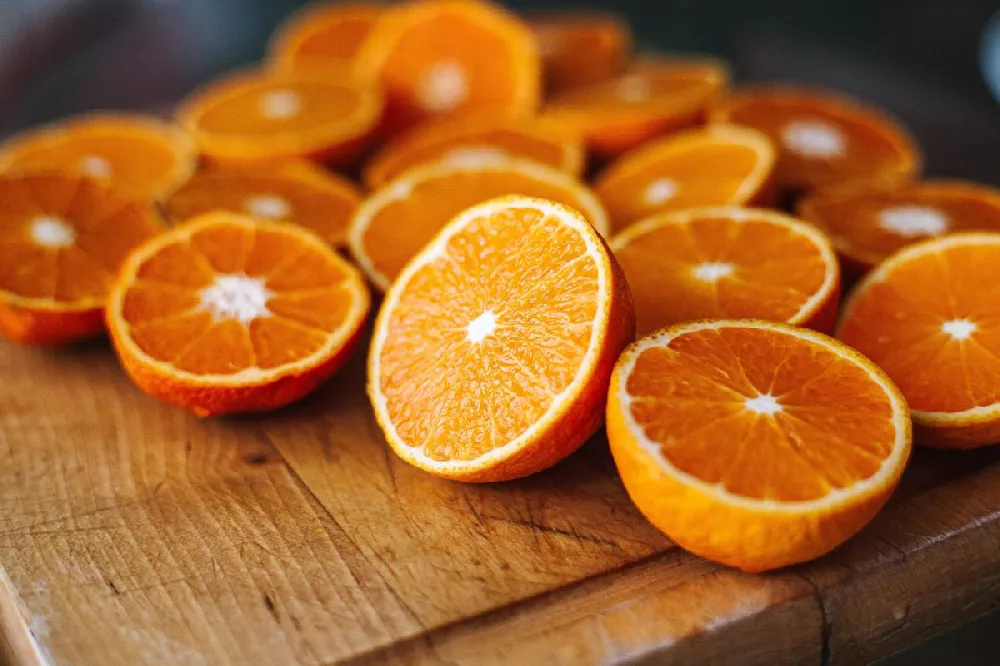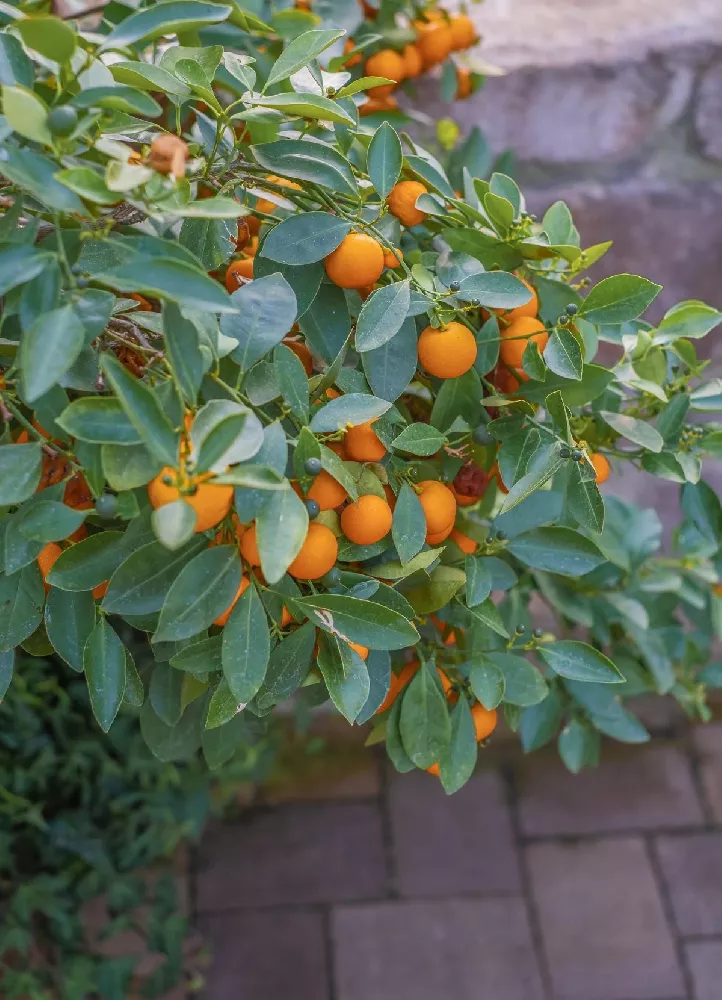- Home >
- Edible Plants >
- Kishu Mandarin Tree
Kishu Mandarin Tree for Sale - Buying & Growing Guide
- Ships in 1-2 days
- 1-Year Warranty Eligible
- Pots or accessories are not included unless specified in the product options.
Shipping Details:
Products shipped through FastGrowingTrees.com. Once your order is shipped, you’ll receive an email with a tracking number and estimated delivery date. Most orders will ship immediately.
Sometimes, good things really do come in small packages. The kishu mandarin, Citrus kinokuni mukakukishu, is a smaller tree with petite fruit — but those fruits are worth waiting for! With a classic citrus taste, they are sweet and juicy, and they are perfectly sized to fit in a lunch box or tuck away in a purse for an afternoon snack. The kishu mandarin is not a fussy tree and grows well in a variety of soil types. It also adapts easily to container growing, making it a good choice for a patio plant, as well as for those who garden in the north, where it can be brought indoors in the winter. The kishu mandarin tree is an ancient cultivar that grew originally in China, and there are good reasons why it's still grown today. Here are a few of them:
- In spring, the tree is covered with fragrant white flowers that fill your garden with scent.
- Its attractive, glossy dark green leaves are evergreen, providing winter interest in the garden.
- The kishu mandarin tree needs little pruning, unlike many fruit trees.
Plant Care
Sunlight

The kishu mandarin tree does best in full sun — six or more hours of direct light a day.
Watering
The kishu mandarin tree likes moist soil, so water whenever the soil is dry, usually every few days when young.
Fertilizing

Fertilize with a slow-release fertilizer designed for citrus trees as directed.
Planting and Care
Planting instructions
Choose a site for your kishu mandarin tree with full sun, in soil that drains well. Unpot your sapling and tease out any encircling roots, which can girdle the tree and slowly kill it. Dig a hole that’s as deep as the root ball and twice as wide, and place the tree in it. Holding it upright and steady, fill in around the roots with topsoil, tamping down as you go to eliminate air pockets. Water thoroughly. Apply a 2- to 3-inch layer of organic mulch, such as bark chips, to conserve moisture and hinder weed growth, but don’t let it touch the trunk to avoid rot.
Watering and nutrients
Kishu mandarin trees like moist, but well-drained, soil. During your tree’s first year, water every few days until you see robust new growth on the branches. Then taper back to watering about once a week. To determine if the tree needs water, check the soil an inch or so below the surface — if it’s dry, give your tree a drink. Fertilize your tree during spring and early summer with a product formulated for citrus trees.
Pollination
The kishu mandarin tree is self-fertile, meaning you will be able to harvest fruit even if you only have one tree. You will get a larger harvest from each tree, however, if you have more than one growing near each other. The fragrant flowers of this cultivar are very attractive to pollinators such as bees and butterflies, and if you are growing your tree in a container indoors, it’s best to bring it outside when blooming so it has access to these beneficial insects. If that’s not possible, you can hand-pollinate using a cotton swab or paintbrush, collecting pollen and distributing it among the flowers.
Pruning
Unlike some fruit trees, the kishu mandarin doesn’t need a hard pruning in late winter. Monitor your tree for dead, diseased, and damaged limbs, and trim them out whenever you see them. For the tree’s first two years, prune out any fruit that appears so that all the tree’s energy goes into new growth. After that, prune out any fruits that are crowded together so that each mandarin has room to grow.
Pests, diseases, and animals
A healthy tree should be able to fend off minor insect or disease pressure with little difficulty. Pests that may appear on your tree include aphids, citrus leaf miners, and scale insects. Horticultural oil can help control them, or you might consider releasing predatory insects, such as ladybugs and lacewings, which eat these pests. Diseases that may impact your tree include anthracnose and armillaria root rot, both of which are fungal in nature. Copper fungicides may help limit their damage. It’s also a good idea to keep the area around your tree free of litter and leaf debris, and to water at the base of the trunk, rather than wetting the leaves.
Harvesting
The fruit of the kishu mandarin ripens in early winter in most regions. Ripe fruit will be completely orange, with no green at all, and it will be soft to the touch. The best way to tell if it’s time to harvest is to pick a mandarinand eat it — it should be sweet and juicy. They should be harvested by using pruners or secateurs to clip each fruit off the tree. Store in a cool location.
Achieving maximum results
In much of the continental U.S., kishu mandarin trees should be grown in containers so they can be brought inside when the temperatures dip below 20 degrees Fahrenheit. Choose a container for your tree that is roughly twice the size of the root ball, with good drainage in the bottom. Plant your tree in a good-quality potting mix as per our directions above. If growing indoors, place the container in front of your sunniest window. Keep in mind that pot-grown plants may need more watering than those grown in the ground, so monitor the soil carefully for dryness. Every few years, unpot your tree to freshen up the soil and make sure the roots aren’t circling — if so, prune them back or replant in a larger pot.
FAQs
Where can I grow kishu mandarins?
Kishu mandarins can be grown outdoors in USDA hardiness zones 8 through 11. They can handle temperatures down to 20 degrees Fahrenheit but prefer warm weather. If you do not live in one of these zones, however, they are easily grown in a container that is brought inside in the winter and placed in a sunny window.
How big does a kishu mandarin tree get?
When grown outdoors and well cared for, a kishu mandarin tree may reach a height of 8feet, with a width of 3 to 4 feet. A container-grown tree is unlikely to get that tall since the roots will be constrained by the size of the potting container.
How can I use a kishu mandarin tree in my landscape?
This lovely, petite tree would make a great focal point in an Asian- or Mediterranean-inspired garden, underplanted with shade-loving perennials. The tree is eye-catching year-round, but especially in winter, when it is covered with bright orange fruit. Container-grown kishu mandarin trees make excellent patio plants. Consider placing two in terracotta planters on either side of the pathway that leads to your porch or patio.
You can't add more Product Name - Product size to the cart.
OK



